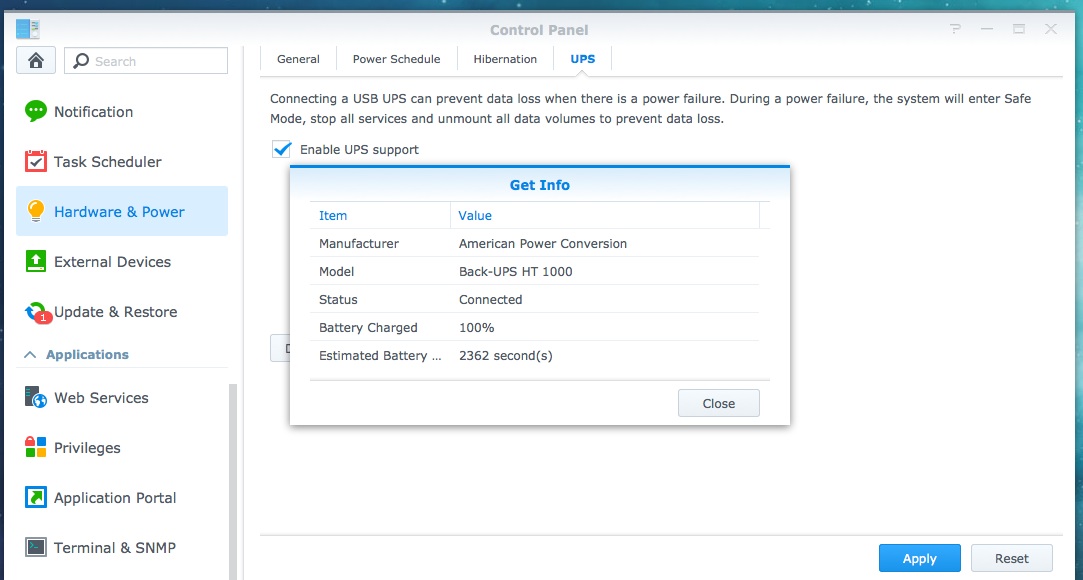A new UPS we installed this week for our qPCR machine (Opticon2 - BioRad) to handle power surges and power outages doesn’t seem to be working properly. With the qPCR machine (and computer and NanoDrop1000) plugged into the “battery” outlets on the UPS, this is what happens when the Opticon goes through a heating cycle:
[caption id=“” align=“alignnone” width=“727”]![]() (http://eagle.fish.washington.edu/Arabidopsis/20150918_opticon_ups_battery.jpg) The UPS becomes overloaded when the Opticon is in a heating cycle.[/caption]
(http://eagle.fish.washington.edu/Arabidopsis/20150918_opticon_ups_battery.jpg) The UPS becomes overloaded when the Opticon is in a heating cycle.[/caption]
And, sometimes, that results in triggering a fault, shutting everything off in the middle of a qPCR run:
[caption id=“” align=“alignnone” width=“733”]![]() (http://eagle.fish.washington.edu/Arabidopsis/20150918_opticon_surge_fault.jpg) Fault message indicating unit overload.[/caption]
(http://eagle.fish.washington.edu/Arabidopsis/20150918_opticon_surge_fault.jpg) Fault message indicating unit overload.[/caption]
This is supremely lame because having a battery backup is a great way to prevent the qPCR machine from shutting off when a power outage occurs!
I switched the Opticon (and computer and NanoDrop1000) to the outlets that are solely for surge protection. Check out what happens when I run the qPCR machine now:
[caption id=“” align=“alignnone” width=“738”]![]() (http://eagle.fish.washington.edu/Arabidopsis/20150918_opticon2_ups_surge.jpg) Opticon plugged in to surge protection outlet while in heating cycle. Notice that output load is 0%.[/caption]
(http://eagle.fish.washington.edu/Arabidopsis/20150918_opticon2_ups_surge.jpg) Opticon plugged in to surge protection outlet while in heating cycle. Notice that output load is 0%.[/caption]
So, I guess we’ll settle for at least having the surge protection aspect of things.
While handling this UPS issue, I realized that the two Synology servers we have possess a built-in UPS monitor. So, I connected the USB cables to/from each of the UPS that each server is plugged into and enabled UPS shutdown in the Synology Diskstation Management (DSM):
[caption id=“” align=“alignnone” width=“744”] (http://eagle.fish.washington.edu/Arabidopsis/20150918_eagle_ups.jpg) Eagle[/caption]
(http://eagle.fish.washington.edu/Arabidopsis/20150918_eagle_ups.jpg) Eagle[/caption]
[caption id=“” align=“alignnone” width=“754”] (http://eagle.fish.washington.edu/Arabidopsis/20150918_owl_ups.jpg) Owl[/caption]
(http://eagle.fish.washington.edu/Arabidopsis/20150918_owl_ups.jpg) Owl[/caption]
Now, both Synology units will enter Safe Mode when the UPS they’re connected to reaches a low battery status. This will help minimize data loss/corruption during the next extended power outage we experience.